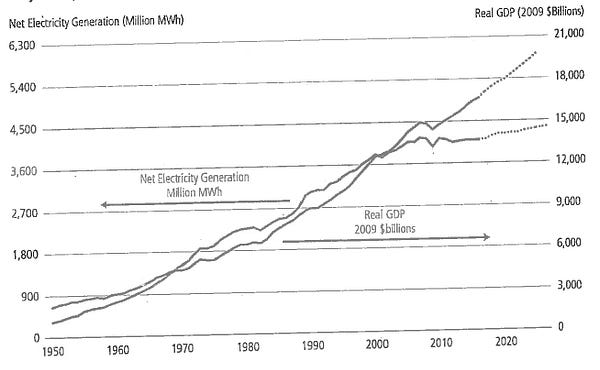On Saturday, we reported that a leaked draft of Energy Secretary Rick Perry’s grid study obtained by Bloomberg debunks his attack on renewable energy.
ThinkProgress has now obtained a copy of that draft, and it has many more surprises — or, rather, findings that are fairly well known to energy experts but may come as an unpleasant surprise to Perry and the White House. For instance, a large fraction of America’s aging fleet of coal and nuclear plants are simply not economic to operate anymore.
The July draft, which ThinkProgress received from multiple sources, is here, so the public will be able to compare the final “politically-approved” version with the draft prepared by Department of Energy (DOE) staff. It is widely feared Perry’s team of Trump appointees will simply erase the the study’s inconvenient truths before it final report is released to the public.
The release of the study has been delayed several weeks — and the findings in the draft might explain why. The study was specifically requested to back up Perry’s claims that EPA regulations, along with renewable power sources like solar and wind power, were undermining the U.S. electric grid’s reliability by forcing the premature closure of “baseload” (24–7) power sources like coal and nuclear.
But the leaked July draft concludes the grid is as reliable than ever.
As for baseload plant retirements, factors like environmental regulations and renewable energy subsidies “played minor roles compared to the long-standing drop in electricity demand relative to previous expectation and years of low electric prices driven by high natural gas availability.”
The draft report finds that since 2002, “most baseload power plant retirements have been the victims of overcapacity and relatively high operating cost but often reflect the advanced age of the retiring plants.”
Overcapacity is a major cause of the turmoil in electricity markets. The report explains that because the grown in electricity demand has flattened since 2008, it is harder for “less competitive plants” to survive.
Between 1970 and 2005, “total US electricity generation grew steadily at a compound annual growth rate (CAGR) of 2.7 percent.” But since then, the rate has fallen to 0.05 percent — “even as the nation’s gross domestic product grew by 1.3 percent per year over the same period” (see chart), the draft report says.
 CREDIT: July draft of DOE grid report
CREDIT: July draft of DOE grid report
It’s increasingly clear that, for the foreseeable future, gas prices will stay low, demand growth will stay lower (thanks in large part to energy efficiency), and renewables will keep getting cheaper.
And it doesn’t make sense to keep an uneconomic plant running when you know it’s going to keep losing money.
In the case of nuclear power, the study notes that vast majority of the plant closure announcements blame plant retirement on “unfavorable market conditions.” And the “most unfavorable condition is that the marginal cost of generation for many nuclear plants is higher than the cost of most other generators in the market.”
 Marginal cost estimates for major U.S. generators. Combined cycle (CC) gas plants are very efficient whereas combustion turbine (CT) plants are inefficient, but cheaper to build. CREDIT: Draft DOE report
Marginal cost estimates for major U.S. generators. Combined cycle (CC) gas plants are very efficient whereas combustion turbine (CT) plants are inefficient, but cheaper to build. CREDIT: Draft DOE report
The bottom line is that “as long as natural gas prices stay down and there is an oversupply of energy in many hours of the day and year [because of zero-marginal-cost renewable power] the typical nuclear plant will lose money on every kWh produced, and not be able to make it up on volume.”
As an aside, if existing nuclear power plants are unprofitable, it should be pretty obvious that building a new nuclear power plant, which costs many billions of dollars — makes no economic sense at all.
Similarly, coal is also hurt by its high marginal cost: “[Coal] plants that have retired are old and inefficient units that were not recovering their operations and fuel costs, much less capital cost recovery.”
Uneconomic coal plants are run less often. The DOE draft reports that a detailed analysis found “about 70 percent of the [coal] plants that have retired between 2010 and 2016 had a capacity factor of less than 50 percent in the year prior to retirement.” That is, averaged over the whole year, they were running at half of their full power rating.
The DOE staff also explain that not only is the reliability of grid continuing to improve even as we add more and more renewables, but “High levels of wind penetration can be integrated into the grid without harming reliability.” And since renewables keep dropping in price, we can expect more and more penetration.
It’s really no surprise that DOE staff would conclude renewables are not threatening grid reliability. After all, many countries around the world, such as Germany, have integrated far higher percentages of solar and wind than we have, while maintaining high reliability.
The only surprise remaining is how many of these findings Trump’s political appointees will erase.
Teaser photo credit: The Bruce Nuclear Generating Station, the largest nuclear power facility in the world By Chuck Szmurlo – Own work, CC BY 2.5, https://commons.wikimedia.org/w/index.php?curid=1841973





